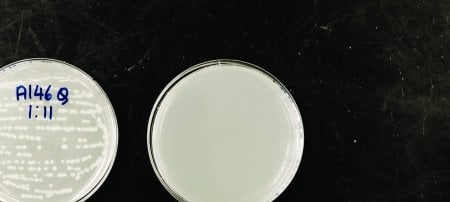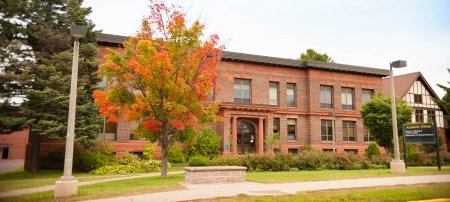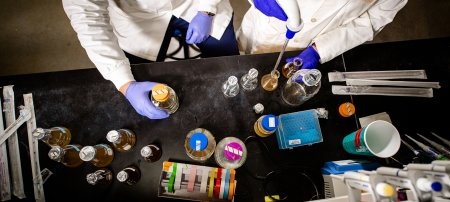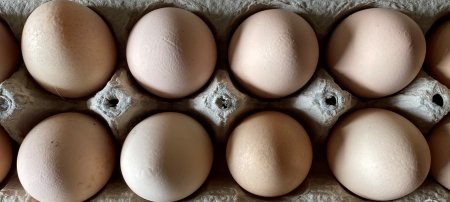Turning off Small RNA: Michigan Tech Scientist Designs a New Tool for Breaking the Epigenetic Code

For the last dozen years, scientists have known that minuscule strings of genetic material called small RNA are critically important to our genetic makeup. But finding out what they do hasn’t been easy. Now a scientist from Michigan Technological University and his team have developed a way to turn off small RNAs and find out just how important they can be.
When it comes to inheritance, DNA is just the half of it. What we are is also driven by the epigenetic world of RNA: the countless, twisting molecules that DNA churns out. RNA in turn transforms the amino acid soup in our cells into the proteins that are us—and every other plant and animal on the planet, for that matter.
There’s more than one kind of RNA, however. In addition to the long strings that make proteins, there are short, meddling snippets called small RNAs. Sometimes, they can attach to long RNA molecules and break them in two. That obviously has consequences for the organism, but exactly what role the thousands of different small RNAs play has been a puzzle.
Now, Guiliang Tang, an associate professor of biological sciences, has developed a way to put a single small RNA out of commission and observe what happens when it can’t do its job.
To do this, Tang and his team threw a wrench into a well-understood process that controls leaf symmetry and the tendency of plants to grow upright.
First they synthesized a sequence of DNA that would make a custom-designed type of small RNA, called a small tandem target mimic, or STTM (see Figure). Then they introduced their synthetic DNA in Arabidopsis, a plant often used in genetics research. Once in the Arabidopsis, the synthetic DNA began manufacturing many copies of the STTM.
Then all the little STTMs began locking onto strands of a specific type of RNA, right where the plant’s small RNA would normally have cut them in two. That blocked its action, so the long RNA strands remained intact.
Furthermore, the procedure prompted the cell to destroy all of its own small RNAs that would normally have cut the RNA. Together, those two mechanisms allowed the long RNA to make its protein unabated.
The results were dramatic. The control Arabidopsis plants grew upward on a central stem with regularly shaped leaves and stems. The mutant plants were smaller, tangled, and amorphous.
Their method isn’t limited to one small RNA involved in leaf symmetry in Arabidopsis.
“You can use this to study the function of any small RNA in the cell,” says Tang.
In an online commentary, Plant Cell senior features editor Nancy Eckardt called their method “a highly effective and versatile tool” for studying the functions of small RNA.
Now, Tang hopes to find out how and why this procedure causes cells to destroy small RNA. And his wife and fellow researcher Xiaoqing Tang, an assistant professor of biological sciences, plans to use this technology to better understand type 2 diabetes.
Their work is funded by the National Science Foundation and described in the article “Effective Small RNA Destruction by the Expression of a Short Tandem Target Mimic in Arabidopsis,” published Feb. 16 online in the journal Plant Cell. The lead authors of the paper are students who worked with Tang: Jun Yan, now a postdoctoral researcher at Purdue University, and Yiyou Gu, now an undergraduate at Nanjing Agricultural University, in China. Other coauthors are Xiaoyun Jia, Wenjun Kang and Shangjin Pan of the University of Kentucky and Xuemei Chen of the University of California at Riverside.
Michigan Technological University is an R1 public research university founded in 1885 in Houghton, and is home to nearly 7,500 students from more than 60 countries around the world. Consistently ranked among the best universities in the country for return on investment, Michigan's flagship technological university offers more than 185 undergraduate and graduate degree programs in science and technology, engineering, computing, forestry, business, health professions, humanities, mathematics, social sciences, and the arts. The rural campus is situated just miles from Lake Superior in Michigan's Upper Peninsula, offering year-round opportunities for outdoor adventure.




Comments